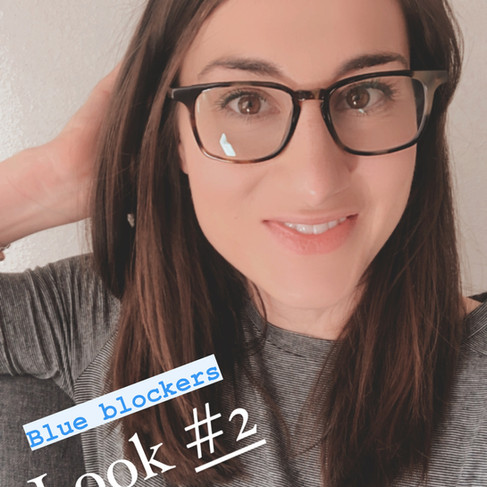Is Blue Light A Problem?: Understanding the Health Impacts of Blue Light Exposure
- The Facility Denver

- Mar 9, 2022
- 3 min read
Visible light from the sun is made up of red, orange, yellow, green, and blue rays that combine to form ‘white light’. Of the colors, blue light is on the far end of the spectrum (380-500nm) and has the highest energy of the rays. Blue light scatters quite easily, which is why we see a blue sky on a cloudless day!
NOT ALL BAD: A proper amount of blue light (from the sun) is beneficial in that it improves our natural sleep cycle, helps balance our mood, and improves cognitive function.
However, in our modern world, electronics and devices contribute significantly to our exposure to blue light. Screen time is a reality, as over 80% of Americans spend more than two hours a day on a device that emits blue light. This has only increased since 2019 with a shift towards working from home remotely.
>>Overexposure is virtually inescapable. Mitigation is key.<<

In high amounts, Blue Light negatively impacts health.
Firstly, the low contrast of blue light emitted from screens can cause eye strain, dry, and irritated eyes. There is some evidence it contributes to macular degeneration. Screen usage has negative impacts on cognitive performance.
However, the biggest risk of overexposure is a disruption to circadian rhythms. Blue light suppresses melatonin secretion, even as little as two minutes of exposure at nighttime is enough to drop melatonin by 50%. In a healthy population of 119 volunteers, full spectrum light exposure shortened melatonin duration by 90 minutes; suggesting impacts not only on sleep onset, but sleep duration.
New studies showed that exposure to blue light after dark increases the risk of metabolic dysfunction, depression/anxiety, and cancer.

Blue light exposure in the wrong amount will have a downstream effect SOMEWHERE. It may manifest as sleep disturbance, cognitive performance changes, mood changes, or metabolic dysfunction. Or all of the above.
How Can you Reduce The Impact of Blue Light?
Minimize screen time, especially before bed. It’s a good practice to limit screen usage in the evening hours when the sun is down.
Use Night Shift. On apple products, it’s very simple to set your screen to automatically dim with sunset. Use this for computers, phones, and tablets as an extra protection.
Improve Your Routine. Make an effort to get full spectrum light in the mornings, and shut off lights in the evening with the sunset. Your circadian rhythm responds to subtle shifts and the more you settle into routine (with sleeping, eating, exercise, and mental activity), the more consistent your body will be.
Wear Blue Blockers. Blue light blocking glasses specifically filter out blue wavelengths. They can be worn during daytime when working for extended time looking at screens. Darker, amber lenses are helpful at nighttime for protecting circadian rhythms and ensuring optimal sleep.
Blue-Blocking Lenses For Everyone
You can get blue blocking glasses whether you wear prescription lenses, readers, or non-adjusted lenses. Putting on a pair of blue light glasses is convenient at home, at work, or while traveling. This is an easy first step to optimizing your lighting environment without a complete overhaul.
Our favorite blue light filtering glasses are BluBlox. They have high standards and make lenses that actually filter blue and green light (not just a coating on the lens).
<<Get 15% off your order at BluBlox.Com with code Facility15>>
What we want to make understood is this:
Chronic blue light exposure can have lasting negative impacts on health, particularly affecting sleep quality and eye health. Negative effects can be mitigated by minimizing screen time, using blue light filters and glasses, and optimizing your routine.
----------

Want to work with a functional medicine doctor to run labs and assess nutrient status? Struggling with hormone imbalance, IBS, weight gain, mood changes? Let's look at BIOCHEMISTRY. Read more about Functional Medicine at The Facility here.
Not sure where to start?
CLICK HERE to schedule a FREE 15-Minute Consult with Kate to determine your best course of action!
Or reach out by email info@thefacilitydenver.com




















Comments